The U.S. Intelligence Community (IC) stands as a vast, intricate network of 9 organizations dedicated to the security and strategic interests of the United States. Among these, the Office of the Director of National Intelligence (ODNI) and the Central Intelligence Agency (CIA) operate independently, highlighting the critical role of intelligence in national defense and policy making.
This complex ecosystem includes entities such as the National Security Agency (NSA), the Defense Intelligence Agency (DIA), and the Federal Bureau of Investigation (FBI) – Intelligence Branch, each playing a pivotal role in the collection, analysis, and dissemination of intelligence. The IC’s operations embrace a rigorous six-step process known as the Intelligence Cycle, ensuring that the efforts of these agencies align with the law and serve the country’s best interests comprehensively.

This article aims to navigate the structure and functionalities of the top 9 U.S intelligence agencies, including the Department of Homeland Security’s Office of Intelligence and Analysis, the National Geospatial-Intelligence Agency, and the National Reconnaissance Office, among others. With a focus on federal bureau of investigation, military intelligence, financial intelligence, and counterintelligence, we will uncover the contributions of each agency to the national security framework.
5 Best Submarines in the World
By delving into the roles of such pivotal agencies, readers will gain an authoritative insight into the mechanisms that safeguard the United States, underpinned by a commitment to serving aspirants and professionals in defense services with empowering and educational content.
1. Office of the Director of National Intelligence (ODNI)
The Office of the Director of National Intelligence (ODNI) stands as a pivotal entity within the U.S. Intelligence Community (IC), tasked with the overarching responsibility of intelligence integration across its 18 elements. The ODNI is led by the Director of National Intelligence (DNI), a key figure appointed by the President with the advice and consent of the Senate, who serves as the principal advisor on national security intelligence matters to the President, the National Security Council, and the Homeland Security Council.

Key Responsibilities and Structure
- Leadership and Advisory Roles: The DNI oversees the implementation of the National Intelligence Program and acts as the primary intelligence advisor to the President and national security councils.
- Intelligence Integration: The ODNI leads the integration of military, foreign, and domestic intelligence crucial for national defense and policy-making.
- Budget Oversight: It directs the National Intelligence Program budget, ensuring that resources are allocated effectively across the intelligence community.
Component Offices and Focus Areas
The ODNI is organized into several component offices under three main focus areas: Core Mission, Enablers, and Oversight. These offices include:
- Directorate of Digital Innovation
- Directorate of Analysis
- Directorate of Operations
- Directorate of Support
- Directorate of Science and Technology
Specialized Centers Under ODNI
The agency oversees various specialized centers that address specific national security concerns:
- National Counterterrorism Center (NCTC)
- National Counterintelligence and Security Center (NCSC)
- National Counterproliferation and Biosecurity Center (NCPBC)
- Cyber Threat Intelligence Integration Center (CTIIC)
- Foreign Malign Influence Center (FMIC)
These centers play critical roles in coordinating the U.S.’s response to diverse global threats, from terrorism to cyber threats and foreign malign influences.
Commitment to Civil Liberties and Transparency
The ODNI is deeply committed to upholding civil liberties and ensuring transparency within its operations. It manages this through several dedicated offices:
- Office of Civil Liberties, Privacy, and Transparency: Integrates civil liberties and privacy protections into IC activities.
- Inspector General of the IC: Conducts audits and investigations to promote efficiency and effectiveness.
- IC Equal Employment Opportunity and Diversity (EEOD) Office: Ensures equal employment opportunities within the ODNI and across the IC.
Educational and Career Opportunities
The ODNI provides valuable resources for those interested in intelligence careers, offering insights into the IC’s history, ongoing missions, and opportunities for students, veterans, and career professionals. This initiative supports the agency’s goal of attracting skilled individuals to serve in various capacities within the intelligence community.
The ODNI’s strategic position and its comprehensive approach to intelligence integration significantly enhance the United States’ ability to respond to national security threats, making it a cornerstone of American intelligence operations.
15 Best Aircraft Carriers in the World
2. Central Intelligence Agency (CIA)
The Central Intelligence Agency (CIA), established under the National Security Act of 1947, is a pivotal institution within the United States Intelligence Community (IC). Unlike the Federal Bureau of Investigation, which possesses law enforcement functions, the CIA is primarily engaged in overseas intelligence gathering. This agency plays a crucial role in national security through its extensive intelligence operations.
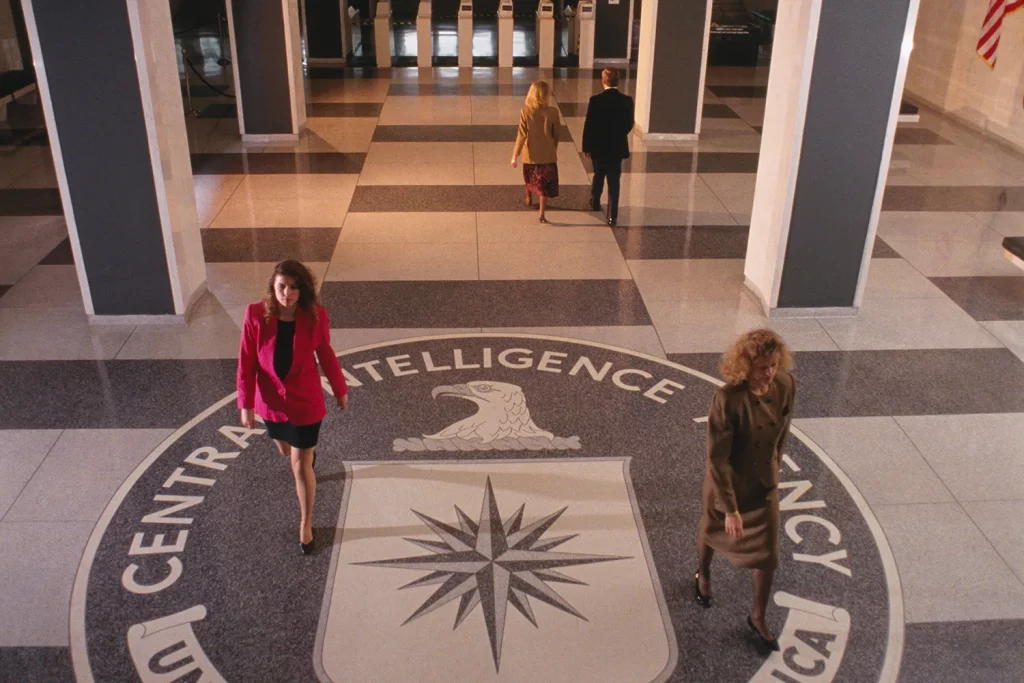
Focus on Human Intelligence (HUMINT)
The CIA is renowned for its emphasis on Human Intelligence (HUMINT), involving the collection of information from human sources. As the national manager for HUMINT, the CIA coordinates these activities across various agencies within the IC, ensuring a streamlined approach to intelligence gathering.
Covert Operations and Global Intelligence
A significant aspect of the CIA’s mandate is to conduct covert operations and gather intelligence that informs the nation’s strategic decisions:
- Covert Actions: Historically, the CIA has been involved in critical covert actions such as the ouster of Iran’s Premier Mohammad Mosaddeq and the overthrow of Guatemala’s democratically elected government. These operations have had profound impacts on global political landscapes.
- Technical Operations: The agency has also excelled in technical intelligence operations, including the surveillance of the Soviet military’s communications and the development of advanced reconnaissance technologies like the U-2 aircraft and various spy satellites.
Adapting to Post-Cold War Challenges
Following the dissolution of the Soviet Union, the CIA redirected its focus towards emerging threats such as terrorism and international criminal organizations. This transition involved:
- Counterterrorism: Amplifying efforts to tackle nonstate actors and prevent terrorist activities.
- Nuclear Non-Proliferation: Enhancing capabilities to monitor and prevent the spread of nuclear weapons.
Financial and Analytical Contributions
Although the exact figures remain classified, the CIA’s budget is estimated to be around $15 billion, reflecting its extensive operational and analytical responsibilities. The agency’s financial resources are integral to maintaining the United States’ intelligence capabilities at a global level.
Impact and Historical Significance
The contributions of the CIA to national and global security are immense. From playing a decisive role during the Cuban Missile Crisis to its current efforts in counterterrorism and intelligence analysis, the CIA continues to be a cornerstone of American intelligence efforts. Its operations and strategies are continually evolving to address new challenges and threats to U.S. national security.
Top 5 Fastest Missiles in the World
3. National Security Agency (NSA)
The National Security Agency (NSA) is a key pillar in the United States Intelligence Community, primarily focused on signals intelligence (SIGINT) and information assurance. Officially established by President Harry S. Truman in 1952, the NSA operates under the jurisdiction of the Department of Defense and serves both as a Defense Agency and a member of the Intelligence Community.
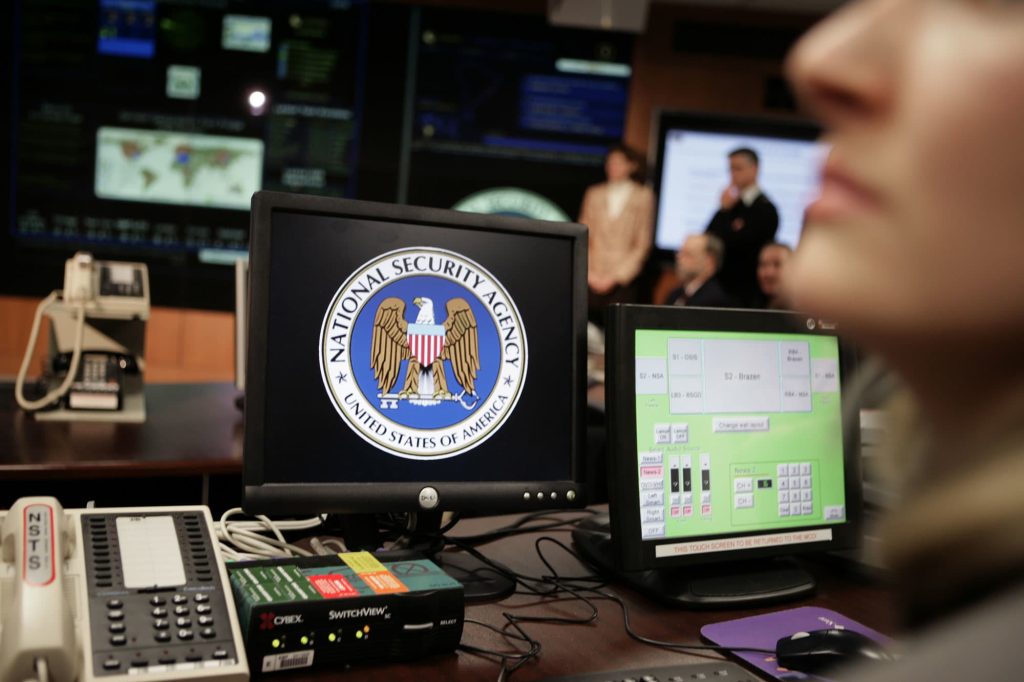
Role and Functions
The NSA is tasked with the collection and analysis of foreign communications and foreign signals intelligence, which makes it a crucial entity in national defense, cybersecurity, and counterintelligence efforts. It operates under a dual mission of protecting U.S. national security systems and producing foreign signals intelligence information.
Organizational Structure
- Director of the National Security Agency (DIRNSA): The NSA is led by the DIRNSA, who also serves as Chief of the Central Security Service (CSS) and Commander of the United States Cyber Command (USCYBERCOM).
- Central Security Service (CSS): This component of the NSA provides cryptologic support, knowledge, and assistance to the military cryptologic community.
- Combat Support Agency: The NSA also functions as a combat support agency for the Department of Defense, emphasizing its role in military operations.
Key Operations and Programs
- Signals Intelligence (SIGINT): The SIGINT mission collects and processes foreign electronic communications and signals to produce intelligence that supports national security and military operations.
- Cybersecurity: The NSA’s cybersecurity mission involves protecting and defending national security information systems against intrusion and damage.
- Cryptology: NSA leads the U.S. Government in cryptology, which includes the encryption and decryption of information.
- Computer Network Operations: These operations are designed to gain strategic advantages over adversaries by targeting their information systems.
Global Presence and Impact
- Global Surveillance and Data Collection: The NSA’s surveillance capabilities allow it to intercept and store vast amounts of data worldwide, including emails, phone calls, and internet usage.
- Cryptologic Centers: The agency maintains four major cryptologic centers across the United States, which handle the processing and analysis of intelligence data.
- International Partnerships and Collaboration: NSA collaborates with various international and domestic entities to enhance cybersecurity measures and intelligence capabilities.
Commitment to Legal and Ethical Standards
- Core Values: The NSA upholds core values of legality, integrity, and transparency, with a staunch commitment to protecting civil liberties and privacy.
- Oversight and Compliance: Various offices within the NSA ensure that all operations adhere to legal standards and respect civil rights.
Educational and Career Opportunities
The NSA is dedicated to cultivating a diverse and talented workforce. It offers numerous career opportunities and collaborates with academic institutions to develop programs that prepare future professionals for careers in cryptology, cybersecurity, and intelligence analysis.
Technological Advancements and Innovations
- Artificial Intelligence (AI): The NSA is actively involved in developing and securing AI technologies to enhance its intelligence-gathering and analytical capabilities.
- Industry Partnerships: Through collaborations with industry leaders, the NSA leverages advanced technologies to address cybersecurity challenges.
Community Engagement and Resources
- NSA.GOV: The official website provides resources about leadership, cybersecurity initiatives, and the National Cryptologic Museum.
- Educational Resources: The NSA offers materials and programs that support education in science, technology, engineering, and mathematics (STEM) fields, aimed at inspiring the next generation of intelligence professionals.
In its role as a cornerstone of America’s defense and intelligence apparatus, the NSA continues to adapt to the digital age’s challenges, ensuring the nation’s security against both traditional and emerging threats.
4. Defense Intelligence Agency (DIA)
The Defense Intelligence Agency (DIA) stands as a crucial component of the United States Intelligence Community, serving a dual role as both a defense and intelligence agency. Positioned uniquely at the intersection of the Department of Defense (DoD) and the Intelligence Community (IC), the DIA is instrumental in providing comprehensive military intelligence to support both combat and non-combat operations, ensuring the U.S. military’s strategic superiority.

Role and Mission
The DIA’s primary mission is to deliver indispensable military intelligence to warfighters, defense policymakers, and force planners within the DoD and the broader IC. This mission supports U.S. military planning and operations and weapon systems acquisition, aiming to prevent and decisively win wars.
Organizational Structure
- Director of DIA: The agency is led by a three-star military officer, a position that rotates among the Army, Navy, Air Force, and Marines approximately every three years.
- Workforce: Comprising over 17,000 employees, three-quarters of whom are career civilians with expertise in fields relevant to defense and military applications.
- Global Operations: DIA professionals frequently travel internationally, working closely with counterparts from foreign nations to bolster U.S. defense capabilities.
Key Functions and Operations
- Intelligence Production: As the nation’s primary manager of foreign military intelligence, the DIA collects, analyzes, and disseminates critical intelligence about foreign militaries and their capabilities.
- Support to Military Operations: The agency plays a vital role in planning and executing intelligence operations during peacetime, crises, and conflicts, aligning with military and national security objectives.
- Combat Support Agency: DIA’s status as a DoD combat support agency underscores its integral role in linking intelligence to combat operations, enhancing the effectiveness of U.S. military engagements.
Symbolism and Public Engagement
- Emblem Meaning: The DIA’s emblem features a gold flaming torch, representing knowledge; the Earth, symbolizing its global mission; red atomic ellipses, indicating the scientific and technical aspects of its work; and 13 stars with a wreath from the DoD seal, reflecting its heritage and commitment.
- DIA Museum and Comic Series: The DIA Museum offers a declassified glimpse into the agency’s multifaceted roles, and its comic book series illustrates how DIA experts preempt various threats, making intelligence work accessible and engaging to the public.
Collaborations and Innovations
- Joint Intelligence Analysis Complex: An initiative to enhance the DIA’s analytical capabilities through advanced infrastructure.
- Diverse Business Partnerships: The agency actively engages with a variety of businesses, including those owned by women, veterans, and minorities, to foster diverse perspectives and innovations in intelligence.
Education and Career Development
- Internships and Careers: DIA provides summer internships for college students and offers a wide range of career opportunities for individuals with expertise in various academic fields, from political science to bio-sciences.
- Professional Development: Through ongoing training and development programs, DIA ensures its workforce remains at the forefront of intelligence and military expertise.
The Defense Intelligence Agency’s comprehensive approach to intelligence not only fortifies the United States’ defense capabilities but also ensures that the nation’s armed forces are equipped with the critical information needed to operate effectively in complex global scenarios.
5. Federal Bureau of Investigation (FBI) – Intelligence Branch
The Federal Bureau of Investigation (FBI) Intelligence Branch (IB) was established in 2005, following the Intelligence Reform and Terrorism Prevention Act of 2004. This creation was a direct response to the intelligence challenges highlighted by the September 11 terror attacks. Positioned within the broader framework of the U.S. intelligence community, the IB focuses on enhancing national security through superior intelligence gathering and analysis.

Structure and Composition
The FBI Intelligence Branch is strategically divided into several key components to streamline its operations:
- Directorate of Intelligence: Provides strategic direction and oversight to the FBI’s Intelligence Program.
- Office of Partner Engagement: Facilitates collaboration with local, state, federal, and international partners.
- Office of Private Sector: Engages with private sector entities to fortify mutual interests in national security.
Core Functions and Operations
Operating independently from the FBI’s Counterterrorism Division (CTD), the Intelligence Branch has a wide array of responsibilities:
- Intelligence Analysis: At the heart of the IB’s operations are the Intelligence Analysts who utilize information gathered by FBI Special Agents and other sources. They apply their deep knowledge of specific issues and geographic areas to assess threats and inform FBI operations.
- Field Intelligence Groups (FIGs): These groups are spread across various FBI field offices, ensuring that intelligence operations are both comprehensive and localized.
- Intelligence Collection: Methods include interviews, surveillance, human source operations, and liaisons, adhering to guidelines set by the attorney general.
Leadership and Oversight
The current head of the FBI Intelligence Branch is Executive Assistant Director Ryan T. Young, who was appointed in December 2021. Under his leadership, the IB continues to prioritize the integration of intelligence and operations to effectively address national security threats. The headquarters of the IB is located at the J. Edgar Hoover Building in Washington, D.C., symbolizing its central role in the FBI’s intelligence strategy.
Strategic Impact
The Intelligence Branch is pivotal in shaping the FBI’s overarching intelligence strategy. It ensures that intelligence efforts are balanced between strategic foresight and tactical operations, thereby enhancing the FBI’s capacity to preempt and respond to threats. This strategic approach is supported by a dedicated national intelligence workforce within the Directorate of Intelligence, established to maintain the FBI’s competitive edge in intelligence operations.
The FBI Intelligence Branch’s commitment to robust intelligence analysis and strategic operations significantly contributes to the safety and security of the United States, reflecting its crucial role within the broader intelligence community.
6. Bureau of Intelligence and Research
The Bureau of Intelligence and Research (INR) at the Department of State plays a pivotal role in shaping U.S. foreign policy by providing timely, accurate intelligence to diplomats and policymakers. INR’s unique position within the intelligence community underscores its commitment to deep expertise, independence, and delivering insights that speak truth to power.
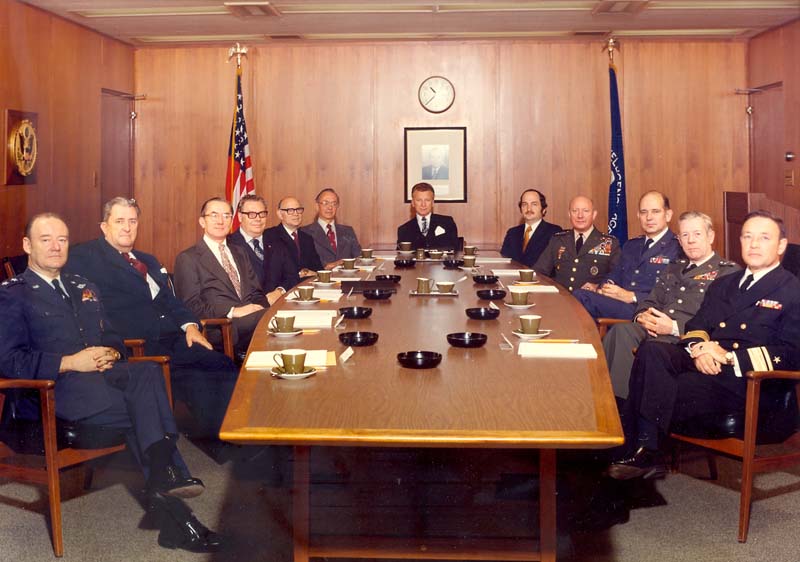
Core Responsibilities and Operations
INR’s primary responsibility is to support U.S. diplomacy with robust intelligence analysis. It achieves this through several key functions:
- Intelligence Assessments and Briefings: Every week, INR delivers dozens of intelligence products and briefings to U.S. diplomats and policymakers, both domestically and internationally.
- Global Surveys and Research: Annually, INR conducts hundreds of surveys in over 100 countries, gathering data that informs critical foreign policy decisions.
- Analytic Outreach: As the intelligence community’s lead in analytic outreach, INR collaborates with non-governmental experts on research projects, leveraging external expertise to enhance the intelligence provided to the Executive Branch.
Specialized Intelligence Analysis
INR’s analysts focus on a variety of global issues that impact U.S. foreign policy:
- Election Monitoring: Analyzing foreign election results to anticipate changes that could affect U.S. interests.
- Conflict Reporting: Monitoring global conflicts and wars, providing real-time intelligence to policymakers.
- Technology and Cybersecurity: Covering advancements in cyber and emerging technologies.
- Environmental Intelligence: Evaluating the implications of climate change on international relations and policy.
Commitment to Diversity and Inclusion
INR places high value on a diverse workforce to enrich analysis and avoid cognitive biases:
- Inclusive Recruitment: Actively hiring professionals from varied racial, ethnic, linguistic, and professional backgrounds.
- Diversity Councils: The Diversity, Equity, Inclusion, and Accessibility Council works to foster an inclusive environment that values different perspectives.
Professional Development and Employee Engagement
INR is dedicated to the professional growth of its employees through various initiatives:
- Training and Rotations: Offers IC-focused training programs and opportunities for rotations to other government agencies.
- Leadership Development Council: Provides networking and professional development events, spearheaded by employees.
Recognition and Workplace Excellence
INR consistently ranks highly in federal government surveys for work-life balance, innovation, and job satisfaction, reflecting its status as a top workplace within the intelligence community.
By integrating comprehensive intelligence gathering with a focus on workforce development and diversity, INR significantly contributes to the formulation of informed, effective U.S. foreign policy.
7. Department of Homeland Security – Office of Intelligence and Analysis
The Office of Intelligence and Analysis (I&A) within the Department of Homeland Security (DHS) plays a critical role in safeguarding the United States by delivering and developing intelligence that enhances national security. This office is unique within the U.S. Intelligence Community (IC) for its direct engagement with State, Local, Tribal, and Territorial (SLTT) partners as well as the private sector, ensuring a comprehensive approach to homeland security.
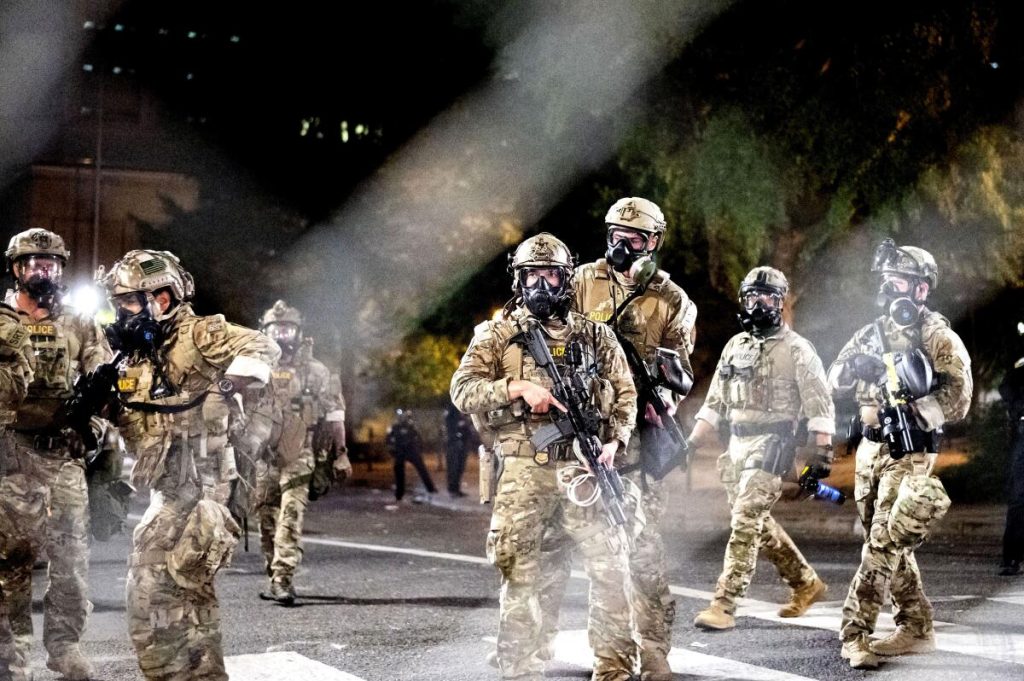
Leadership and Organizational Structure
I&A is led by Under Secretary for Intelligence and Analysis Ken Wainstein. The organizational structure of I&A is robust, encompassing various divisions designed to streamline its intelligence operations:
- Under Secretary of Homeland Security for Intelligence and Analysis
- Principal Deputy Under Secretary for Intelligence and Analysis
- Deputy Under Secretary for Intelligence Enterprise Operations
- Field Operations Division
- Homeland Identities, Targeting and Exploitation Center
- Deputy Under Secretary for Intelligence Enterprise Readiness
- Intelligence Enterprise Standards
- Mission Readiness
- Chief Information Officer
Strategic Operations and Missions
I&A’s operations are strategically aimed at integrating intelligence across multiple levels:
- Multi-directional Information Exchange: Engages in robust information sharing with SLTT, private sector, and foreign partners to address intelligence gaps.
- Strategic Intelligence Products: Produces comprehensive reports leveraging unique DHS data, law enforcement information, and IC holdings to support decision-making at all levels.
- Mission Centers: Operates five mission centers, each focused on specific threats and intelligence integration to enhance national security.
Key Initiatives and Collaborations
I&A oversees several critical initiatives aimed at enhancing intelligence capabilities:
- Fusion Centers: Coordinates with state-owned centers that serve as hubs for intelligence sharing among SLTT, federal, and private sector partners.
- Partner Engagement (PE): Manages strategic relationships across a broad spectrum of stakeholders to enhance collaborative intelligence efforts.
- National Vetting Center Support: Provides essential data and tools to support the U.S. Government’s efforts in vetting processes critical to national security.
Talent and Leadership Development
Recognizing the importance of its human resources, I&A invests significantly in talent development:
- Professional Growth: Focuses on continuous improvement of skills and leadership capabilities among its personnel.
- High-Performing Team Cultivation: Aims to foster a cadre of dedicated professionals adept at addressing homeland security challenges.
Integration with DHS Components
I&A enhances its operational effectiveness by closely integrating with other DHS components, ensuring that intelligence is seamlessly incorporated into broader homeland security operations. This integration supports the DHS mission by enabling proactive responses to potential threats through informed decision-making processes.
In summary, the Office of Intelligence and Analysis is pivotal in equipping the Homeland Security Enterprise with the necessary intelligence to maintain the safety, security, and resilience of the homeland. Its comprehensive approach not only addresses immediate threats but also prepares the United States for emerging challenges in national security.
8. Drug Enforcement Administration – Office of National Security Intelligence
The Drug Enforcement Administration’s Office of National Security Intelligence (ONSI) was established in 1973 and plays a critical role within the U.S. Intelligence Community. As a member since 2006, ONSI supports the DEA’s mission by providing essential intelligence on illegal drug activities that inform national security and law enforcement operations.
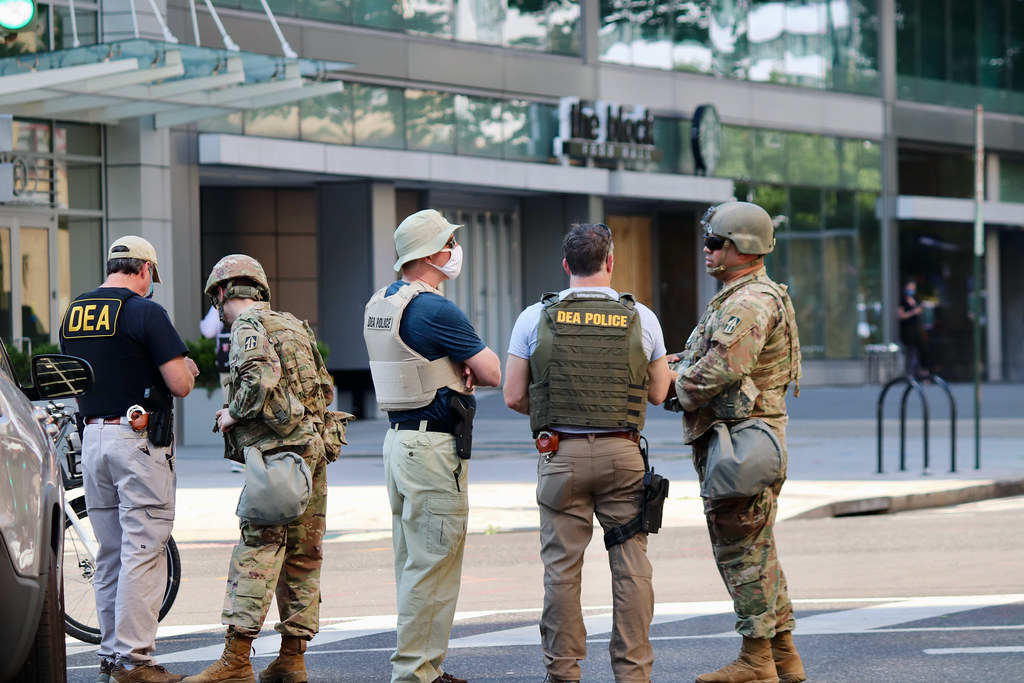
Key Functions and Operations
ONSI’s primary functions are multifaceted, focusing on the collection, analysis, and dissemination of narcotics intelligence. Here’s a breakdown of its main activities:
- Intelligence Collection and Analysis: ONSI gathers intelligence that contributes to drug seizure operations and arrests. Its analysts develop insights into drug trade trends, enhancing the DEA’s operational effectiveness.
- Collaboration with Intelligence Agencies: Working closely with other agencies such as the CIA and FBI, ONSI ensures a comprehensive understanding of the drug threat landscape, supporting DEA’s broader law enforcement missions.
- Information Sharing: It plays a pivotal role in the exchange and storage of narcotics intelligence, facilitating efficient communication among federal, state, and local agencies.
Organizational Structure and Leadership
Paul E. Knierim serves as the DEA Assistant Administrator for Intelligence, overseeing a team of over 680 intelligence analysts. This robust workforce is structured to optimize the handling and processing of critical intelligence data.
Legal and Ethical Compliance
ONSI adheres to stringent policies, including DEA regulations and Presidential Policy Directive 28 (PPD-28), to manage SIGINT information responsibly. Here’s how they ensure compliance and protect civil liberties:
- Handling of SIGINT Information: ONSI follows specific procedures to manage requests for unmasking U.S. Person identities in intelligence reports.
- Training and Standards: Personnel involved in SIGINT activities receive annual training to stay updated on legal requirements and ethical standards.
Technology and Data Handling
ONSI does not engage directly in SIGINT activities but receives analyzed intelligence from other agencies. This includes minimized SIGINT information, which is crucial for building comprehensive intelligence assessments.
Strategic Impact and Collaborations
The integration of ONSI within the DEA and the broader intelligence community enhances the collective capability to tackle drug-related threats to national security. By maintaining strong partnerships and leveraging advanced intelligence practices, ONSI supports the DEA’s mission to disrupt the drug trade effectively.
This section of the agency not only highlights its critical role in national security but also underscores the interconnected nature of intelligence work across different federal bodies, enhancing the United States’ capacity to combat drug trafficking and related security threats.
9. Department of the Treasury – Office of Intelligence and Analysis
The Office of Intelligence and Analysis (OIA) at the Department of the Treasury is a critical component in the United States’ financial intelligence framework. Established under the Intelligence Authorization Act of 2004, OIA has evolved significantly from its initial role to become a full-fledged intelligence agency within the Treasury. It plays a pivotal role in advancing national security and safeguarding the financial integrity of the nation by providing timely, relevant, and accurate intelligence and analysis to inform Treasury decisions.
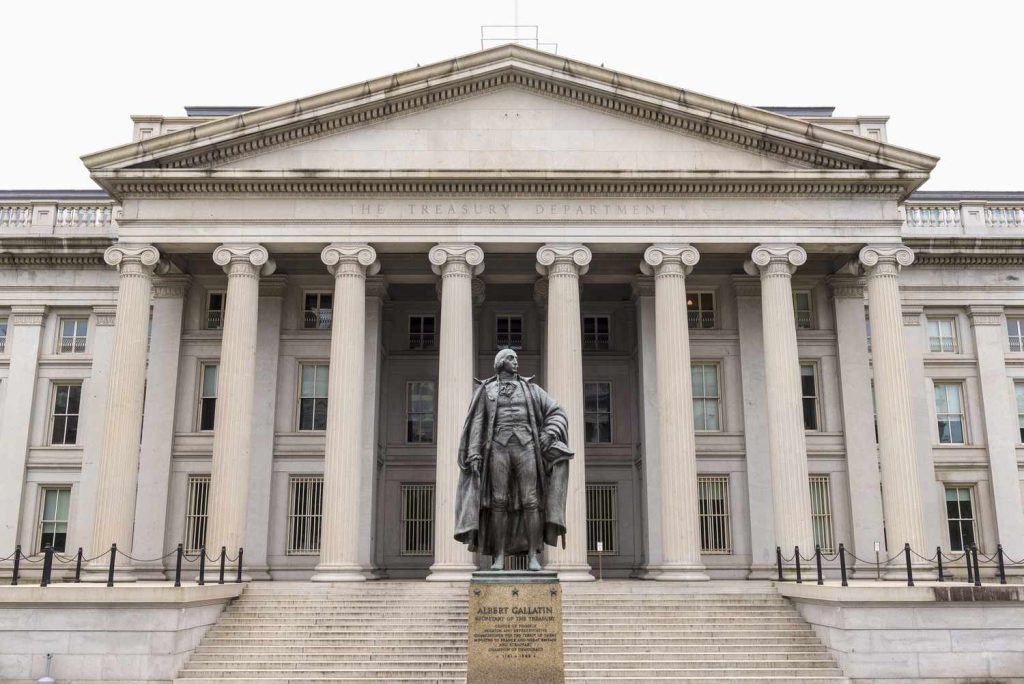
Evolution and Role
OIA’s transformation into a central intelligence entity reflects its increased responsibility in addressing global financial threats. Originally supporting the Treasury’s enforcement functions, it now operates at the forefront of global financial intelligence.
Organizational Impact and Operations
OIA is renowned not only for its strategic intelligence contributions but also for its dynamic operational environment. Here, intelligence officers and analysts work collaboratively to monitor and analyze trends in malign financial activities, crucial for enforcing economic and trade sanctions.
Key Personnel and Structure
The structure of OIA is designed to optimize its intelligence functions, with roles tailored to enhance the United States’ financial security:
- Analysts: They are the backbone of OIA, tasked with gathering and presenting vital information to key departments such as the Office of Foreign Assets Control (OFAC) and senior Treasury officials.
- Counterintelligence Officers: These professionals ensure the security of sensitive Treasury information and intelligence from potential threats.
- IT Professionals: They maintain and secure the communication channels, ensuring uninterrupted access to critical data.
- Security Specialists: Responsible for the physical and informational security of the Treasury, operating round the clock.
- Watch Officers: Staffing OIA’s operations center continuously, ready to respond to any intelligence-related emergencies.
- Disclosure Officers: They manage the sensitive information flow, ensuring it is shared appropriately within legal and ethical guidelines.
Strategic Analysis and Security Missions
OIA’s strategic analysis capabilities are vital in disrupting financial networks that support terrorist activities and other illicit operations globally. The agency’s focus extends beyond traditional intelligence, emphasizing counterintelligence and cybersecurity to protect against and respond to threats.
- Counterintelligence Focus: Enhanced training and awareness programs are in place to safeguard against insider threats and espionage.
- Secure Networks: OIA has developed the Treasury Secure Data Network (TSDN) and Treasury Foreign Intelligence Network (TFIN) to handle sensitive national security information securely.
Integration and Collaboration
OIA’s effectiveness is amplified by its integration within the Treasury and its collaboration with other members of the Intelligence Community (IC). This collaborative environment fosters a robust information-sharing network, essential for comprehensive national security strategies.
- Treasury Intelligence Online: A secure online community that facilitates the exchange of intelligence information among over 5,000 users, enhancing collective understanding and response to financial threats.
Historical Significance and Future Outlook
Tracing its roots back to the Confederation Period, OIA’s historical mandate to combat financial fraud has expanded significantly. Today, it stands as a testament to the evolving challenges in global finance and security, continuously adapting to meet the complex demands of modern financial intelligence and analysis.
OIA remains committed to its mission of informing and supporting the Treasury’s efforts to counter illicit finance and national security threats, thereby reinforcing the financial backbone of the United States.
Conclusion
Throughout the exploration of the top 9 intelligence agencies of the United States, we’ve traversed the intricate landscape of national security and intelligence gathering. From the foundational roles of the CIA, NSA, and FBI to the specialized functions of the Defense Intelligence Agency and the Department of Homeland Security’s Office of Intelligence and Analysis, each entity contributes uniquely to the collective goal of safeguarding the nation.
This cohesive network, underpinned by robust intelligence-gathering processes and inter-agency collaboration, ensures a comprehensive defense mechanism adept at addressing modern challenges.
The significance of these agencies extends beyond their individual missions, impacting both the security architecture of the United States and its position on the global stage. Their collective efforts in intelligence and counterintelligence activities, cybersecurity, and financial integrity underscore the integrated defense strategy essential for national security.
As we continue to navigate the complexities of the 21st century, the roles and responsibilities of these agencies will undoubtedly evolve, reinforcing their crucial place in ensuring the nation’s safety, security, and prosperity.
FAQs
1. What are the member agencies of the US Intelligence Community?
The US Intelligence Community is composed of several key agencies, including the Office of the Director of National Intelligence, Central Intelligence Agency (CIA), National Security Agency/Central Security Service (NSA/CSS), Defense Intelligence Agency (DIA), National Geospatial-Intelligence Agency (NGA), National Reconnaissance Office (NRO), Department of State, and Department of Defense.
2. Which is considered the most powerful intelligence agency in the United States?
The National Security Agency (NSA) is often regarded as the most powerful among the U.S. intelligence agencies, particularly because of its extensive role in mass surveillance and its leadership in developing and deploying Artificial Intelligence (AI) technologies.
3. Which agency ranks above the FBI within the U.S. government?
Within the U.S. Department of Justice, the Federal Bureau of Investigation (FBI) operates under the jurisdiction of the attorney general. The FBI’s intelligence activities are also overseen by the Director of National Intelligence, placing it under the guidance of both the Department of Justice and the Office of the Director of National Intelligence.
4. Does the United States operate any secret spy agencies?
Yes, the United States operates secretive branches within its intelligence agencies, such as the CIA/NSA joint Special Collection Service. This highly classified team is known for deploying eavesdropping devices in strategic locations worldwide, including presidential palaces and embassies.













